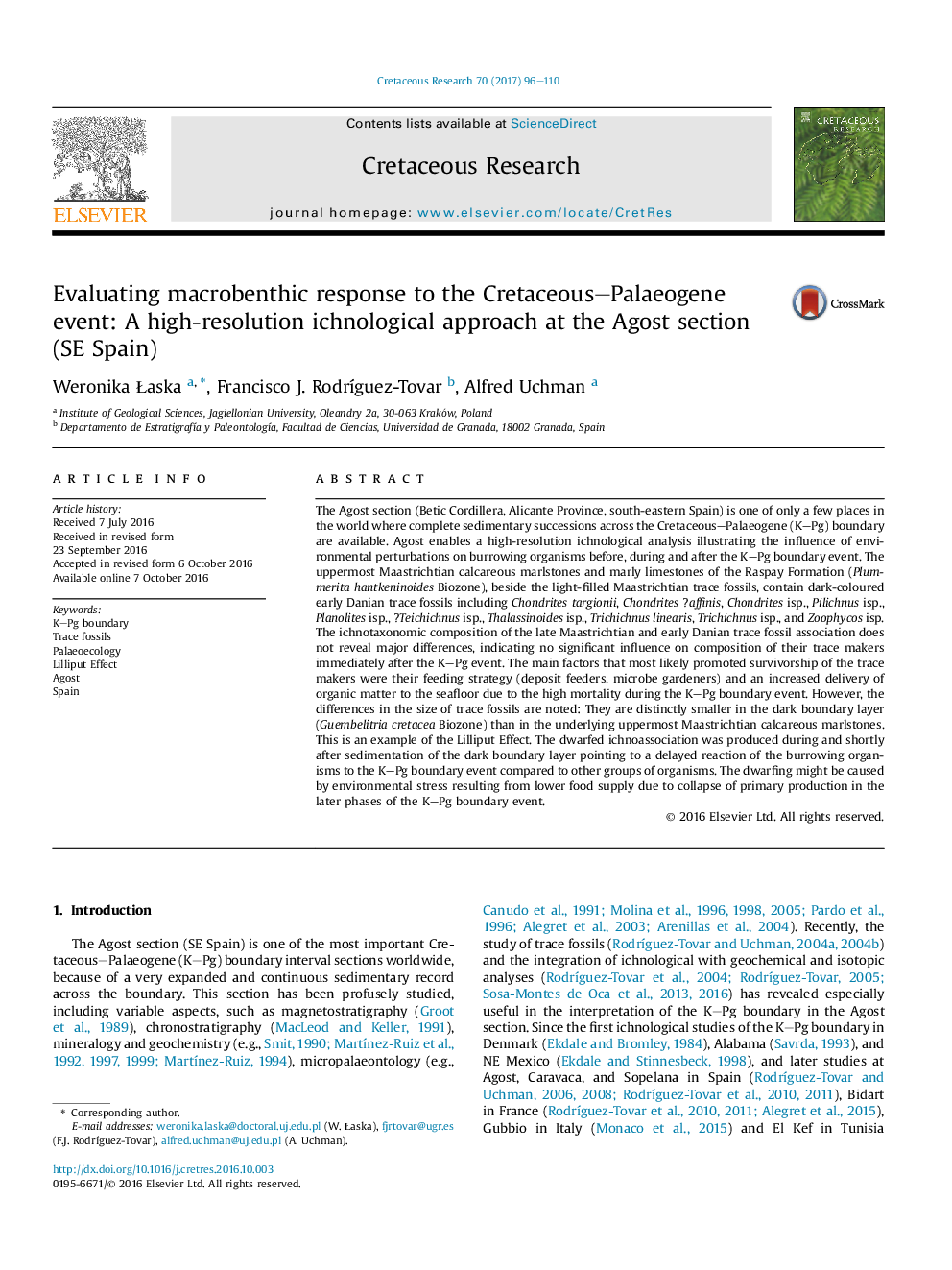| Article ID | Journal | Published Year | Pages | File Type |
|---|---|---|---|---|
| 4746624 | Cretaceous Research | 2017 | 15 Pages |
•No significant mortality of macrobenthic ichnofauna after the K–Pg event: ichnotaxa from both periods are almost the same.•Smaller ichnofossils after the K–Pg boundary event suggest the Lilliput Effect on their tracemakers.•The Lilliput Effect is delayed to the K–Pg event.
The Agost section (Betic Cordillera, Alicante Province, south-eastern Spain) is one of only a few places in the world where complete sedimentary successions across the Cretaceous–Palaeogene (K–Pg) boundary are available. Agost enables a high-resolution ichnological analysis illustrating the influence of environmental perturbations on burrowing organisms before, during and after the K–Pg boundary event. The uppermost Maastrichtian calcareous marlstones and marly limestones of the Raspay Formation (Plummerita hantkeninoides Biozone), beside the light-filled Maastrichtian trace fossils, contain dark-coloured early Danian trace fossils including Chondrites targionii, Chondrites ?affinis, Chondrites isp., Pilichnus isp., Planolites isp., ?Teichichnus isp., Thalassinoides isp., Trichichnus linearis, Trichichnus isp., and Zoophycos isp. The ichnotaxonomic composition of the late Maastrichtian and early Danian trace fossil association does not reveal major differences, indicating no significant influence on composition of their trace makers immediately after the K–Pg event. The main factors that most likely promoted survivorship of the trace makers were their feeding strategy (deposit feeders, microbe gardeners) and an increased delivery of organic matter to the seafloor due to the high mortality during the K–Pg boundary event. However, the differences in the size of trace fossils are noted: They are distinctly smaller in the dark boundary layer (Guembelitria cretacea Biozone) than in the underlying uppermost Maastrichtian calcareous marlstones. This is an example of the Lilliput Effect. The dwarfed ichnoassociation was produced during and shortly after sedimentation of the dark boundary layer pointing to a delayed reaction of the burrowing organisms to the K–Pg boundary event compared to other groups of organisms. The dwarfing might be caused by environmental stress resulting from lower food supply due to collapse of primary production in the later phases of the K–Pg boundary event.
